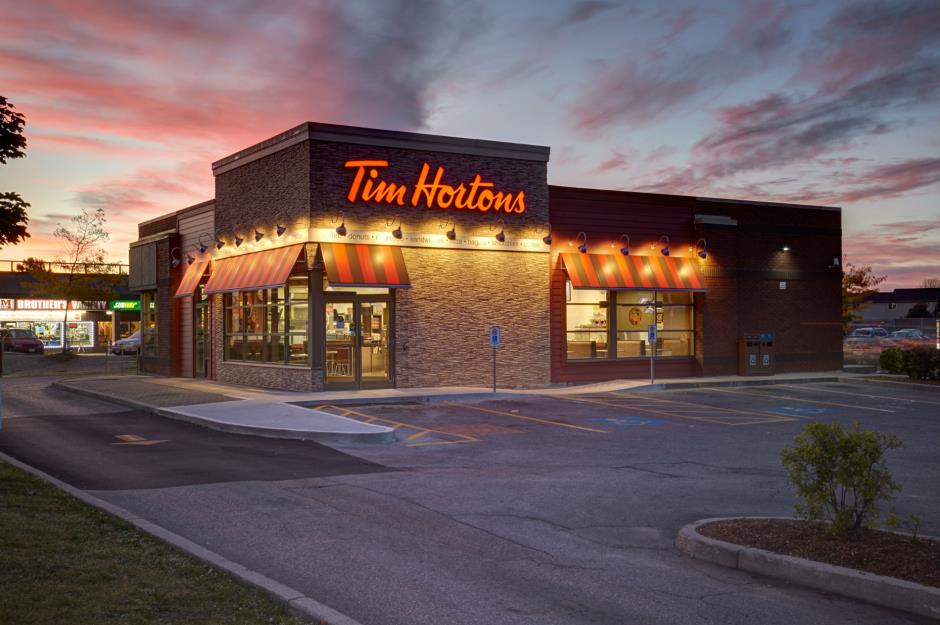Tim Hortons: how a hockey legend's coffee and donut empire is conquering the world
A national treasure
The brain child of one of the ‘100 Greatest NHL Players of All Time', Tim Hortons is more than just a coffee and donut shop. Since its opening in 1964 in Hamilton, Ontario, Tim Hortons has grown into Canada’s largest quick-service chain, and has secured national treasure status. Now it has global ambitions are being realized...
The man behind the name
Miles Gilbert “Tim” Horton was born in 1930 in Cochrane, Ontario. A National Hockey League legend, Tim (pictured, right) had a stellar career spanning across teams including the Toronto Maple Leafs, New York Rangers, Pittsburgh Penguins and Buffalo Sabres.
A savvy business man
Tim Horton had already made waves in the industry with a hamburger restaurant andcar manufacturer Studebaker. But in 1964, Tim and co-founder Jim Charade opened the Tim Horton Donut Shop in Hamilton, Ontario (pictured).
The original offerings
The first stores only offered two products: coffee and donuts for just 10c each. The selection of donuts featured two of Tim Hortons original culinary creations, the Apple Fritter and the Dutchie. In the 60’s, they were the most popular donuts on the menu, and are still as popular today.
Partners in the right places
Soon after the launch of the first store, Tim met Ron Joyce who would influence the franchise forever. After taking over the fledgling store in 1965, Ron had opened two more stores by 1967 and became a full partner in the business. By 1968, Tim Hortons was a multi-million-dollar franchise.
A tragic end
In February 1974, the legendary Tim Horton was killed in a car accident when he lost control of his sports car driving to Buffalo from Toronto. The popular All-Star left behind his wife Lori Michalek and four daughters Geri, Kim, Kelly and Tracy.
Full ownership
A year after the death of his business partner, Ron Joyce bought out Horton’s family shares for $1 million (£780k) and became sole owner of the existing 40 stores.
Expansion with a purpose
After taking control of the franchise, Ron Joyce expanded the chain quickly and aggressively with his sights set on dominating the Canadian coffee and donut industry. Unfortunately, many independent donut shops and small chains lost business and had to close. But on the flipside, per capita, Canada had more donut shops than any other country in the world.
Catering to the customers
As customers’ appetites and taste buds changed, the only thing left to do was expand the menu at Tim Hortons. The biggest change being Timbits (a bite-sized donut hole)…
Timbits
Introduced in 1976, Timbits are one of the most successful products in the franchise’s history and are available in 39 different varieties today. Back in its launch day, a Timbit went for just a nickel, compared to 18 cents if you visited a store today.
Bonjour Québec!
In 1977, the first Tim Hortons opened in Québec in the town of Rosemere. And everyone’s favorite hot beverage, the Double-Double needs no translation for its delicious goodness.
Taking the number 1 spot
In 1977, Tim Hortons’ 76 stores and $20 million (£15.6m) in annual revenues placed it well above second-place fast/casual coffee shop chain Country Style which had 63 outlets and made around $13 million (£10.13m) per year.
Training the best
Ron Joyce’s tentative leadership style pushed the chain forward in operational efficiency. In 1977, the company improved training procedures, opening a centralized franchise training facility in Hamilton, known as ‘Doughnut University’.
Born in the 80s
There was a whole series of new products introduced in the 1980s, which catapulted the chain’s growth and popularity. Some of the new products included muffins (1981), cakes (1981), pies (1982), croissants (1983), cookies (1984), and soups and chilli (1985).
USA, USA, USA!
The first US store opened in Tonawanda NY in 1984, meaning Canadians across the border could still get their caffeine fix.
One of the world’s largest customer rewards programs
In 1986, Tim Hortons created Roll Up the Rim to Win where customers can roll up the rim of their paper hot drink cup to reveal possible prizes as a “thank you” to the customers of 246 restaurants across Canada. Since its launch, the contest has grown into a global annual event in over 3,500 restaurants in Canada, US and Afghanistan. In 1986, the biggest prize was a snack pack of Timbits, but over the years, Tim Hortons has gifted nearly 500 cars and hundreds of millions of coffee and donuts.
The big merger
In 1995, Ron sold Tim Hortons to Wendy’s International Inc. for $600 million (£467m), a financial move which helped to expand the franchise into the US. Although a fruitful partnership to begin with, Wendy’s spun off the entirety of its Tim Hortons shares by the end of 2006.
Changing the name
Originally, the company was listed as Tim Donut Limited, but saw a name change by the 1990s where the company name was re-christened as TDL Group Ltd. to move away from being depicted as a coffee and donut store.
Winning the hearts of a nation with caffeine
Despite this, the franchise’s most popular menu item to this day is the legendary coffee. Eight out of 10 cups of coffee sold in Canada are sold at Tim Hortons, and more than 5.3 million Canadians visit its stores daily.
Millennial coffee
There were milestones all around in the year 2000 as the 2000th restaurant opened in downtown Toronto on Richmond and Sherbourne streets.
Publicly traded company
Tim Hortons became an independent company in 2006 and was listed on the New York and Toronto stock exchanges. The company announced the pricing of its initial public offering of 29 million shares of common stock, at C$27 (equivalent to US$20/£16 today).
Promising coffee excellence
In 2009, the company expanded its 45-year commitment to coffee excellence, announcing a $30 million (£23m) state-of-the-art coffee bean production and roasting facility.
Partners adding a little cream
Moving the headquarters back to Oakville, Ontario in 2009, Tim Hortons changed its corporate structure to become a Canadian public company. The same year, Tim Hortons and Cold Stone Creamery announced co-branded restaurants across both sides of the North American border. But just five years later, Tim Hortons ended the partnership.
A celebration year
In 2014, Tim Hortons celebrated its 50th anniversary and pulled out all the stops. Remembering its humble roots, a recreation of the original restaurant, complete with 1964 original prices, opened in Yonge-Dudas Square in downtown Toronto.
Ever optimistic
The franchise announced the opening of 500 new Canadian stores as part of its long-term vision released to mark its 50th anniversary on May 17 2014, with 300 planned launches in the US.
Another kind of Tim Card
In the same year, Tim Hortons and CIBC launched the co-branded Double Double Visa Card. By using the card, customers instantly earn Tim Cash to use on their favorite Tim products.
Burger King having a piece of the pie
The year of 2014 was already a big year for Tim Hortons, but it got better. Burger King acquired the company for about C$12.5 billion ($11.4bn/£8.9bn), a deal which created the third-largest fast-food company in the world. The companies’ combined business created a fast-food network with $23 billion (£18bn) in sales, including franchises and more than 18,000 restaurants in 100 countries.
Making waves across the pond
It’s music to the ears for many Canadians based in the UK, as the franchise opens its doors to the British public in June 2017. What could be next for the Canadian store?

